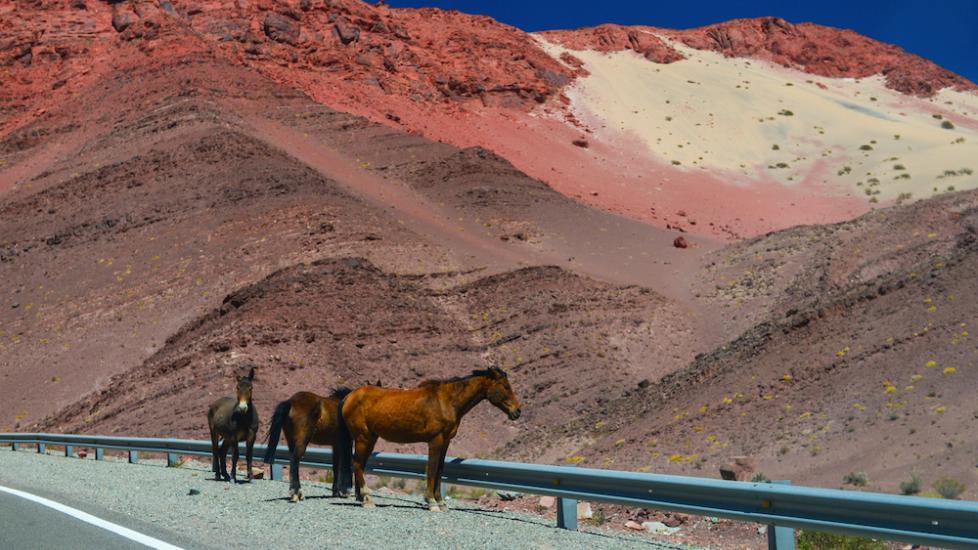Andean
The Andean is a common horse breed from Peru, hailing from the rugged landscape of the Andes Mountains.
Physical Characteristics
Standing at about 12 to 13.2 hands tall (48-53 inches, 122-135 centimeters), the Andean is smaller than most full-size horse breeds and yet it has excellent musculature. Typical of small horses, the Andean has short and straight pasterns with compact and tough hooves. Its profile is slightly convex with a short neck, heavy-looking head, and broad forehead. Additionally, its ears are also short and small, which is probably due to the Andalusian influence.
The Andean, with its strength, great stamina, and well-developed sense of balance and agility, is capable of climbing up mountains at medium speeds with ease. In fact, the Andean can carry a 200-pound pack up steep slopes to 16,000 feet above sea level without becoming overly tired. It also has well-formed lungs and a thick coat to protect it from the cold.
The typical colors for the Andean are chestnut and bay, but it can be found in a variety of solid colors. When compared with its South American Criollo cousins, the Andean looks rather angular, accentuated by its broad, muscular back, rounded rump, and low-set tail. Nevertheless, its gait is typical of horses in the region, with a smooth and rhythmic movement.
Personality and Temperament
Like most pack horses, the Andean carries heavy loads up mountains without complaint. This docile and willing animal is therefore very suitable as a beast of burden, and often form strong bonds with their riders with great loyalty. Their intelligence and eagerness to please make them a good companion for riders of all levels.
History and Background
Originating in the mountainous regions of Peru—specifically the Andes mountains—the Andean horse breed developed into an excellent pack and riding horse, capable of riding at altitudes over 9,000 feet above sea level.
There are three main types of Andean horses: the Peruvian Criollo, the Andino and the Morochuco. Despite similarities, however, it is distinct from the Peruvian Paso horse breed—the national horse of Peru. Just like the South American Criollos, the Peruvian Criollo or the Andean exhibits the Barb and Andalusian influence on account of the Spanish expeditions and colonization efforts in the region. The Andean, however, is distinctly Tibetan.
Health and Care
Due to its place of origin, the Andean has the ability to survive even in cold temperatures and high altitudes. Furthermore, it is able to fend for itself and has developed the skill of distinguishing edible from poisonous vegetation and can thereby be left to feed on its own.
Proper care and management are essential for keeping this horse healthy and strong. This includes providing a balanced diet, regular exercise, and routine veterinary and hoof care.
Featured Image: iStock.com/Pedro Carrilho
